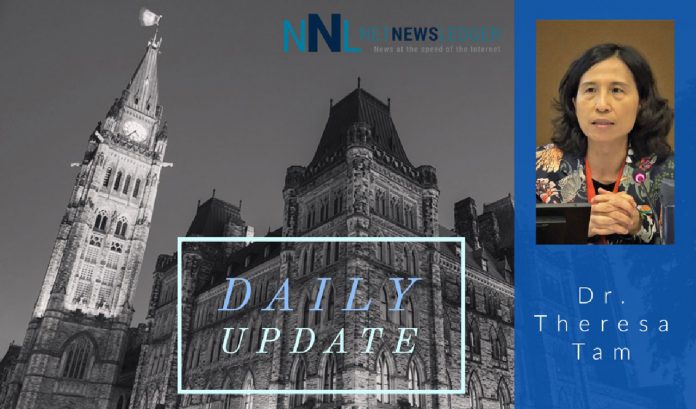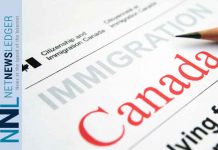OTTAWA – COVID-19 Update – As we ring in the new year and bid farewell to 2020, we continue to track a range of epidemiological indicators to monitor COVID-19 activity and how it is impacting the health of Canadians and public health, laboratory and healthcare capacity. The following summarizes the latest national numbers and trends, and the actions we all need to be taking to protect ourselves and others including during this evening’s celebrations.
Since the start of the pandemic, there have been 572,982 cases of COVID-19, including 15,472 deaths reported in Canada. At this time, there are 72,927 active cases across the country with an average of 6,375 new cases being reported daily (Dec 24-30). Nationally, hospitalisations and deaths, which tend to lag behind increased disease activity by one to several weeks are still increasing. Provincial and territorial data indicate that an average of 3,650 people with COVID-19 were being treated in Canadian hospitals each day during the most recent 7-day period (Dec 23-29), including over 720 of whom were being treated in intensive care units. During the same period, there were an average of 125 COVID-19-related deaths reported daily. This situation continues to burden local healthcare resources, particularly in areas where infection rates are highest. These impacts affect everyone, as the healthcare workforce and health system bear a heavy strain, important elective medical procedures are delayed or postponed, adding to pre-existing backlogs.
We are monitoring with provinces, territories and international partners, to identify COVID-19 variants such as those identified in the United Kingdom and South Africa. Several cases of the new COVID-19 variant identified in the United Kingdom have now been reported in Ontario, British Columbia, Alberta and Quebec. It is expected that other variants of concern will likely be found in Canada as monitoring continues. While early data suggest that the United Kingdom and South African variants may be more transmissible, to date there is no evidence that there is any impact on disease severity, antibody response, or vaccine effectiveness.
Although most Canadians have heeded advice for non-essential travel, some Canadians are still travelling for non-essential reasons. This is deeply concerning. I am asking Canadians to reassess any travel plans. Stay home to protect yourself, your family, and those most at risk of severe illness from COVID-19 in our communities.
As the new year approaches, many of us will be looking for ways to celebrate. For some, these festivities will include serving and drinking alcohol, while others may find this season difficult due to distance from friends and family. During the COVID-19 pandemic, we have seen that some Canadians have increased their alcohol use. It is common to look for ways to cope during periods of uncertainty, but I continue to be concerned about the potential risks of increased alcohol use during COVID-19.
I am reminding Canadians to be aware of the impacts of increased alcohol consumption on their health and to find alternative ways of celebrating and coping with stress that respect public health measures in your region. This could include physical activity, mindfulness, connecting through phone calls and video chats, or celebrating with mocktails or other non-alcoholic beverages. While the best way to avoid short and longer-term risks is to not drink alcohol, Canadians who do consume alcohol can consult Canada’s Low-Risk Alcohol Drinking Guidelines for strategies to help lower the risks for them and the people around them. This resource offers information on standard drink sizes, recommended daily and weekly limits, and reminders to avoid alcohol and/or other drugs when pregnant or breastfeeding, and when operating a motor vehicle.
While we continue to prepare the way for widespread and lasting control of COVID-19 through safe and effective vaccines, Canadians are urged to continue with individual practices that keep us and our families safer: stay home/self-isolate if you have any symptoms, follow local public health advice and maintain individual protective practices of physical distancing, hand, cough and surface hygiene and wearing a face mask as appropriate (including when you can not consistently keep two metres apart from people outside your immediate household).
Canadians can also go the extra mile by sharing credible information on COVID-19 risks and prevention practices and measures to reduce COVID-19 in communities and by downloading the COVID Alert app to break the cycle of infection and help limit the spread of COVID-19. Read my backgrounder to access more COVID-19 Information and Resources on ways to reduce the risks and protect yourself and others.
SOURCE Public Health Agency of Canada







